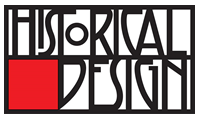Product Description
Thomas Jekyll (attr.) Aesthetic Movement Iron Umbrella or Cane Stand c.1885


THOMAS JEKYLL (attr.) (1827–1881)
BRITISH AESTHETIC MOVEMENT
Umbrella stand c. 1885
Black nickelled and patinated cast and wrought iron,
sunburst detail and decorative fretwork
H: 25 1/4” x W: 13” x D: 9 1/2”
Base W: 9 1/2”
Although he was a successful architect, Jeckyll is best known today for his “epoch-making” designs in metalwork. His architectural practice routinely included the design of gates, railings, and metal fittings for domestic commissions and of coronas, candelabra, and altar rails for ecclesiastical ones. But it was his exhibition pieces for the ironworks firm of Barnard, Bishop & Barnards of Norwich that brought him his greatest renown. His “Norwich Gates” for the 1862 London International Exhibition set in motion the 19th-century wrought iron revival in Great Britain. Subsequent creations, including his “Four Seasons Gates,” exhibited in Paris in 1867 and Vienna in 1873, and his cast iron pavilion for the 1876 Philadelphia Centennial Exhibition, received substantial praise, in particular for their creative use of Asian principles and motifs. His innovative Anglo-Japanese designs for stoves, stove fronts, fenders, fire irons, and other domestic metalwork were also produced and sold in large numbers. As these designs were both artistic and affordable, they allowed the incorporation of objects of beauty into middle-class homes. He was one of the few figures in the design reform movement in Britain who managed to unite beauty and utility.
A very intricately worked late Victorian or Aesthetic Movement wrought and cast iron tall stand for umbrellas or canes with delicately riveted cross hatch fretwork and curling details and handle motif along with an attached iron base with a sunburst design all in the original black nickel finish.
Thomas Jekyll (attr.) Aesthetic Movement Iron Umbrella or Cane Stand c.1885
ITALIAN MAJOLICA
Pair of “Rose” wall pockets c. 1885
Three dimensional realistically rendered pink roses with leaf and stems all in the Barbotine technique
Marks: Made in Italy
Barbotine is the French term for ceramic slip or a mixture of clay and water for molding or decorating pottery. This technique was used to create applied adornments on 19th century majolica items.
H: 13″ x W: 7 1/4″ x D: 4 1/4″
